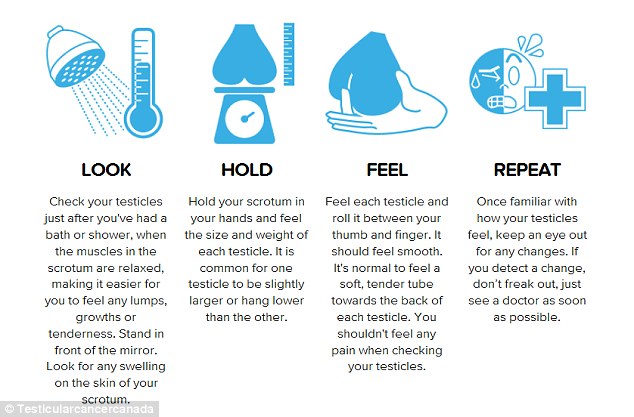Anniversary of Sean Kimerling: Importance of Testicular Cancer Screening
/The anniversary of the late Sean Kimerling, who passed away from testicular cancer at age 37, brings about the importance of screening and awareness around this disease, which is the most common among young men between the ages 19-35.
Testicular Cancer at a Glance
- Most common among ages 15-35
- Ages 20-39 have highest risk
- Average age of diagnosis – 33 years old
- Highly treatable and usually curable
- 95% survival rate
Risk factors
- Caucasian
- Family history
- Undescended testicle
While these are the most important risk factors, other risk factors include HIV infection, history of carcinoma in situ (non-invasive form of testicular germ cell cancer), cancer of the other testicle, and body size (taller men may be more prone).
Self Exams Can Save a Life
Get checked or check yourself
All males, especially those with risk factors, should have a routine testicular exam by a doctor during their regular check-up. Your doctor should be feeling for any swelling or lumps. Men can also perform self-examinations at home. Here’s how:
- Check one testicle at a time.
- Standing in front of a mirror, hold the testicle between your thumbs and pointer and middle fingers of both hands.
- Gently roll each testicle between your fingers while feeling for lumps, swelling and hardness.
If you notice any smooth or hard lumps, bumps, or changes in size or shape, see your urologist immediately.
Diagnosed with Testicular Cancer? Know Your Treatment Options
Treatment options for testicular cancer depend on a number of factors including the type of the cancer, the stage of the cancer, and your overall health. Here are the available testicular cancer treatment options:
Surgery
• Orchiectomy: surgery to remove the testicle
• Retroperitoneal lymph node dissection: For some patients, especially with nonseminoma testicular cancer, the lymph node may also be removed.
• Nerve-sparing surgery: Surgeons use this to prevent nerve damage surrounding the retroperitoneal lymph nodes. By sparing the nerves, men can maintain normal erectile function after surgery.
• Reconstructive surgery: Men can have a prosthetic testicle implanted in the scrotum to replace the surgically removed testicle. The appearance and feel of the prosthesis is similar to a real testicle.
Possible side effects of testicular cancer surgery include: If one testicle is removed, most men can still get erections since they will still produce enough testosterone. If both testicles are removed, men can no longer have children or get an erection because they are unable to produce any testosterone without their testicles. However, testosterone can be replaced using gels, patches, or shots. In addition, men who need to have both testicles removed and plan to have children after surgery should visit a sperm bank to harbor their sperm cells.
Radiation Therapy
Men with testicular cancer may have radiation after surgery if the cancer was not completely removed or if the cancer returns. Testicular cancer is still treatable if it comes back. Radiation treatment is not as affective for other types of testicular cancer. These are then treated with surgery to remove the testicles and lymph nodes, and chemotherapy.
Possible side effects of radiation: Fatigue, nausea, and diarrhea. Side effects improve after radiation is complete. Risk of side effects can also be reduced with a skilled doctor who gives the exact dosage and is extremely accurate in targeting and hitting the tumor during treatment.
Chemotherapy
Chemotherapy is usually given when testicular cancer has spread outside the testicles, to distant locations within the body. It is usually given for nine weeks or longer. Chemotherapy is effective in that it will ensure all the cancer cells have been killed. It is sometimes used in combination with surgery. The most commonly used chemotherapy combinations for testicular cancer are BEP: Blenoxane, Etopophos, or Vepesid, and Platinol, and EP: Etopophos or Vepesid and Platinol.
Possible side effects of chemotherapy: Hair loss, mouth sores, loss of appetite, nausea and vomiting, diarrhea, increased risk of infections, easy bruising or bleeding, and fatigue.
Stem Cell Transplantation
Stem cell transplantation is mostly used when a patient experiences a testicular cancer recurrence after having had a prior successful treatment.
Surveillance
Surveillance is most often used to monitor patients for early signs of a recurrence of testicular cancer. Doctors closely track a patient’s disease using certain exams and tests on a set schedule. No treatment will be given unless there is an abnormal change in the patient’s test results indicating the cancer has come back.



